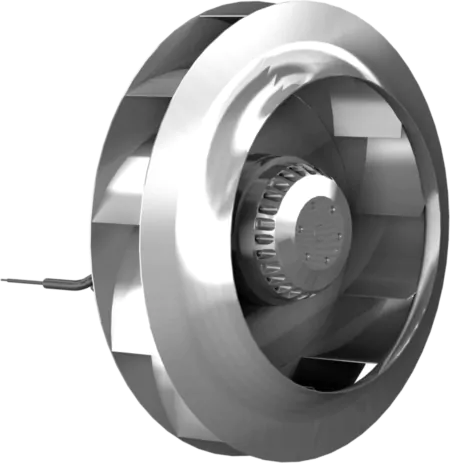What Causes an Unbalanced Impeller?
Learn more on how impellers become out of balance.
What Causes an Unbalanced Impeller?
Impellers are used across all industries to move air and gases to ventilate and cool buildings and machinery. An issue that can occur in some instances is that impellers become out of balance. An unbalanced impeller can lower the operating efficiency of the ventilation system and ultimately fail, causing costly shut down periods whilst this issue is being resolved. Therefore, it is important to understand how to detect any issues of an unbalanced impeller and how to prevent or correct the problem.


Symptoms of an Unbalanced Impeller
Fan manufacturers balance their impellers by ensuring the weight of the impeller’s blades and components are evenly spread across the construction. This to make certain the impeller rotates smoothly. An indication of unbalance is vibration as the rotation is no longer smooth and bearings are worn prematurely. This in turn causes an increase in noise. Hence, the most recognisable symptoms of an unbalanced impeller is a rise in vibration and noise from the fan.
Read our guide on Understanding Noise within Industrial Fan Systems for more information.
Causes of an Unbalanced Impeller
Impellers become out of balance for two main reasons; a change in the weight of one side of the impeller or warping caused by uneven temperatures in the housing. These two instances can occur due to manufacturing processing when being built, the construction material or the conditions the impellers are operated in.
Uneven Weight
An uneven change in weight is caused by material building up or falling away from an area of the impeller. The spinning of the impeller creates centrifugal forces that, in some circumstances, lead to dust or debris from the air the impeller is moving to collect in the outer areas. These forces can also cause particles of the coating of the impeller (for example, paint) to come loose and gravitate to the outer edge of the impeller. When the gathering of fragments of material is non-uniform over the impeller, it leads to uneven weight distribution and so becomes out of balance.
paint spray booth gunIn some cases, the design of backward-curved centrifugal fan blades have proven effective in controlling buildup. This is particularly in spray booths where buildup can be a regular problem due to the air containing paint particles. If the blade is too curved in design, a buildup can develop in the hollow pocket on the back of the impeller. Backward-curved fan designs are available with more steeply sloped blades designed to prevent this sort of buildup. Therefore, it is recommended that this impeller design be used in spray booths and other applications that require the fan to carry air that holds matter like paint.
The issues of paint residue forming on the blades of the impeller does not cause a loss of balance in many cases as the residue tends to form evenly. As a preventative measure to avoid any issues, it is recommended that the impellers are inspected regularly and excess paint is cleaned off.
Further causes of an uneven weight include droplet erosion and corrosion. The former occurs when a liquid, often water, drips onto a part of the impeller and erodes away a small area. The indent this creates leads to a change in the weight of that side of the impeller. Likewise, corrosion occurs when a chemical reacts with the impeller, having a similar effect. The fan should be kept away from areas likely to lead to droplet erosion and a corrosion resistant fan should be used where there is a need to handle air or fumes which contain chemicals. A polypropylene construction is recommended in this case.
Uneven Temperature
Another common cause of unbalance is non-uniform temperature. If a fan rotor is left at rest during an outage, a differential temperature may develop between the top and bottom of the housing. A similar, though less pronounced, temperature differential may develop in the shaft, resulting in differential thermal expansion or warping. This can result from as little as a 1 degree temperature difference between the top and bottom of the shaft. It is more likely to occur when the fan is located in proximity to a heat source.
Furthermore, if the impeller is run at a speed that is too high in terms of revolutions per minute (rpm) for its design, it can become hot and, in extreme cases, cause warping. To avoid warping, the fan should not be turned off for long periods of time where a heat source affects one area and the fan should be run at the manufacturers recommended speed.
In summary, if the fan is vibrating more and making more noise, it is likely to be unbalanced and need attention. The correct choice in impeller design and material coupled with operating and maintenance precautions will ensure it remains balanced. This will increase the longevity of the fan and its components and avoid replacement and shut down costs.
Contact our team to find the best solution for your application. We are able to advise specific impellers suitable for the working conditions and the requirements of the fan system.